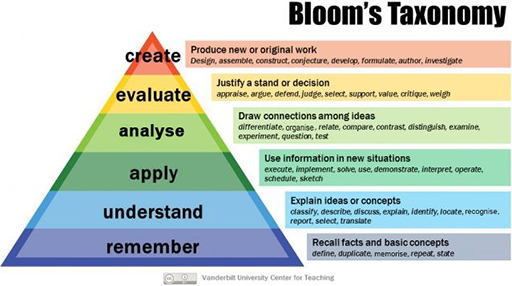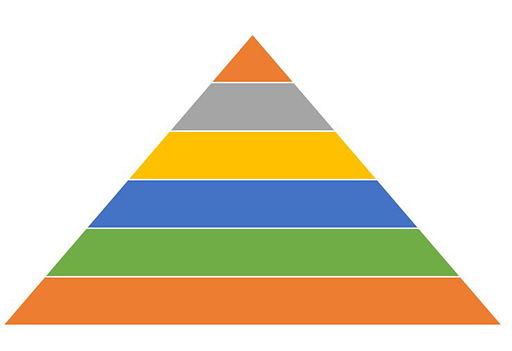4 Learning design
How do you develop learning design in your organisation? What’s applicable, what’s not? How do you share your ideas of learning design for tricky topics? What’s different?
In Week 5 you learned about the activity types that are used at The Open University, but it was also mentioned that other institutions use different versions which might be better suited to their own teaching methods. For example, some education providers base their activity types on Bloom’s taxonomy (see Figure 2) which uses a hierarchy of categories to describe the stages of learning and understanding. The framework elaborated by Bloom and his colleagues originally consisted of six major categories: knowledge, comprehension, application, analysis, synthesis, and evaluation. The categories after knowledge were presented as ‘skills and abilities’, with the understanding that knowledge was the necessary precondition for putting these skills and abilities into practice.
In 2001, a revised taxonomy was developed, which was called a Taxonomy for Teaching, Learning and Assessment which consists of more verbs or ‘action words’ to describe the cognitive processes.
Activity 7 Bloom’s taxonomy
If you are not already familiar with this framework, spend a few minutes reading about how Bloom’s taxonomy [Tip: hold Ctrl and click a link to open it in a new tab. (Hide tip)] is used. How do you think it compares to the Open University’s framework that you read about in Week 5? Which version do you find more appropriate for your own organisation?
Now use the template below (Figure 3) to create your own version of this hierarchy showing how the student could develop their thinking for your chosen tricky topic. Could you make use of this within your organisation? How would you share it with your colleagues?


